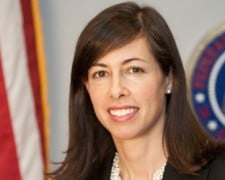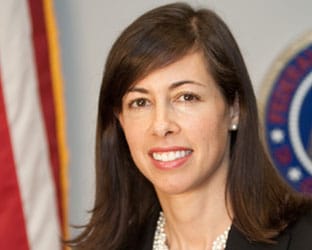 Commissioner Jessica Rosenworcel addressed a telecommunications conference, and during her remarks she outlined what she believes will be essential elements of a successful incentive auction of television spectrum.
Commissioner Jessica Rosenworcel addressed a telecommunications conference, and during her remarks she outlined what she believes will be essential elements of a successful incentive auction of television spectrum.
The Silicon Flatirons spectrum conference was the event, held at the University of Colorado.
Addressing the upcoming auctions, Rosenworcel made the following remarks:
“First, incentive auctions. For nearly two decades, the Commission’s path-breaking spectrum auctions have led the world. The agency has held more than 80 auctions; it has issued more than 36,000 licenses; and it has raised more than $50 billion for the United States Treasury. The Commission’s simultaneous multiple round ascending auctions have been a model for governments and commercial wireless providers across the globe.
“We are now again poised to be the world’s pioneer. We have an opportunity to show how a new kind of auction—incentive auctions—can facilitate the smart and efficient use of wireless resources.
“To be sure, big choices and hard work lie ahead. The agency’s September 28 Notice of Proposed Rulemaking commencing the incentive auction process was only the start. Broad input, including from the people in this room, is critical.
“For my part, I believe four central building blocks are essential components of incentive auctions: simplicity, fairness, balance, and public safety.
“Simplicity is key. Incentive auctions are undeniably complicated. But at every structural juncture, a bias toward simplicity is crucial. Simplicity will yield more interest in the opportunities these auctions provide for broadcasters, and in turn, this will yield more spectrum. In short, to have converts to our crusade for more wireless opportunity, simplicity must be our incentive auction gospel.
“Fairness is essential. This is especially true with regard to the treatment of broadcasters that do not participate in the auction. Fairness demands that we consider how to accomplish repacking by minimizing unnecessary disruption and maximizing the ability of the public to continue to receive free, over-the-air television. At the same time, we ask that broadcasters make a fair assessment of the opportunities that this auction provides the industry. By offering incentives to share channels and incentives to relocate from the UHF to VHF band, this auction can mean new resources for broadcasters to develop new programming and deploy new services.
“Let us also be creative here—and consider how this process can yield new models for station ownership, new funding sources for local content, and new ways to use technology to make efficient use of our airwaves.
“Balance is necessary. We must remember that the sum here is greater than the parts. None of the three legs of the incentive auction—the reverse auction, the repacking, or the forward auction—can stand on its own. They require balance. For instance, the interference rules we consider will not only impact broadcast services, but also how much spectrum will be available for auction, which in turn will impact the revenues raised.
“Balance also requires attention to licensed and unlicensed use of spectrum across all frequency bands. The former provides reliability and interference protection; the latter provides low barriers to entry and promotes the efficient use of limited resources. Good spectrum policy requires both.
“Finally, public safety is fundamental. We must remember that in the Middle Class Tax Relief and Job Creation Act, incentive auctions are part and parcel with enhancing public safety. The auction revenues the Commission raises are designated to support the first nationwide, interoperable wireless broadband public safety network. We must not forget that the success of these auctions requires meeting this funding objective—and delivering on our promise to America’s first responders.
“To all of this, I will add that speed matters. The Commission should put all of our auctions on a timeline. We must move at the pace of digital age wireless demand.”





